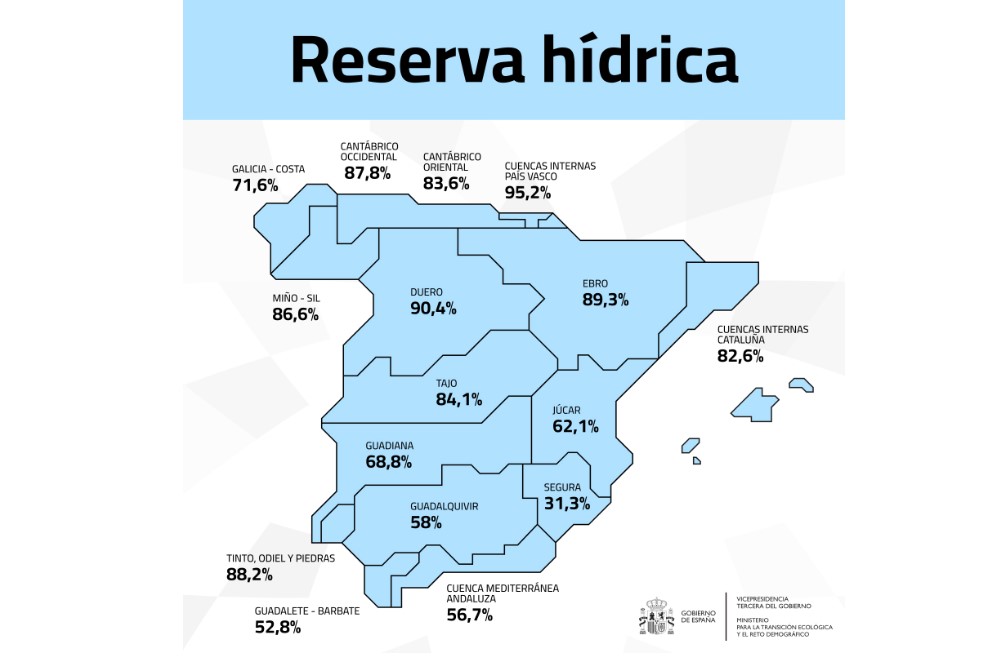The persistent heatwave on the Iberian Peninsula is leaving its mark on Spain’s water reserves. For the third consecutive week, reservoir levels have been declining. According to current figures from the Ministry for Ecological Transition, the reservoirs have lost 429 cubic hectometers of water, representing a drop of 0.77 percentage points compared to the previous week. Despite this typical summer trend, the overall situation of Spain’s water reserves is remarkably stable and significantly better than in previous years.
Current Figures: Over 75% of Capacity Filled
Although the latest measurements show a decrease, the Spanish reserve still stores an impressive 42,410 cubic hectometers of water. This corresponds to 75.68% of its total capacity. These figures are a clear indication of the good condition of Spanish reservoirs and significantly exceed the values of recent years.
Historical Comparison: Significantly Better Situation Than Last Year
A look at past data underscores the current strength. Exactly twelve months ago, in the same week of June, the reserve had around 36,000 cubic hectometers, which corresponded to only 64.68% of its capacity. This means that the current values are a full ten percentage points higher than those of the previous year. The ten-year average also shows a positive trend: the average for this week is 61% with 34,700 hectometers, meaning the current reserves are up to 14 points above that. This impressive recovery is due to significant rainfall, which, despite the heat, primarily affected the Mediterranean slope. The highest rainfall this week was recorded in San Sebastián with 76.7 liters per square meter.
Regional Differences: Almost All Basins Affected, But With Exceptions
An analysis of individual basins shows that almost all of them lost water this week. Only three basins were able to maintain or slightly increase their water levels: the internal basins of the Basque Country (95.2%), the Segura (31.3%), and the Tinto, Odiel y Piedras (88.2%).
The aforementioned Catalan internal basins are particularly well filled. They are followed by the Duero basins with 90.4%; those of the Ebro with 89.3%; Western Cantabrian with 87.8%; Miño-Sil with 86.6%; and the Tagus with 84.1% of its capacity. The internal basins of Catalonia are at 82.6%; followed by Coastal Galicia with 71.6%; Guadiana with 68.7%; and Júcar with 62.1%.
The basins with the largest deficits, although still with good figures compared to previous years, are the Guadalquivir basin (58%), the Andalusian Mediterranean basin (56.7%), and the Guadalete-Barbate basin (52.8%). The Segura basin in Murcia remains the basin with the lowest values in all of Spain at 31.3%, but managed to maintain its level compared to the previous week.




